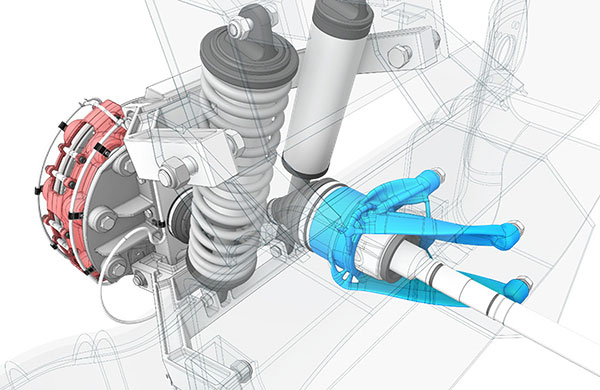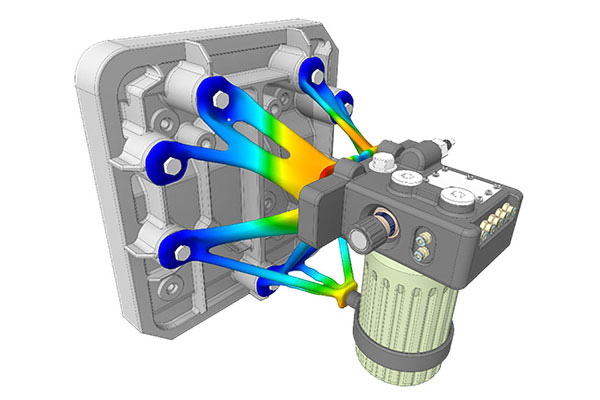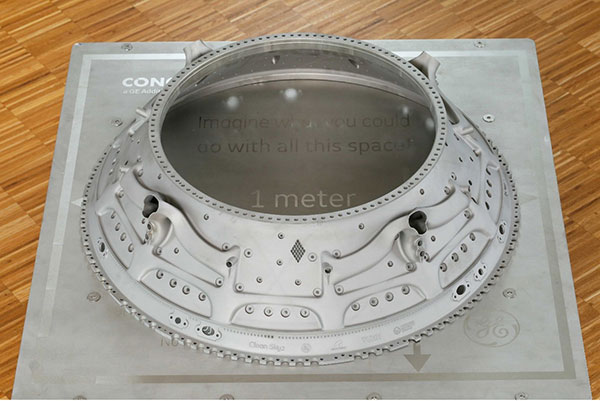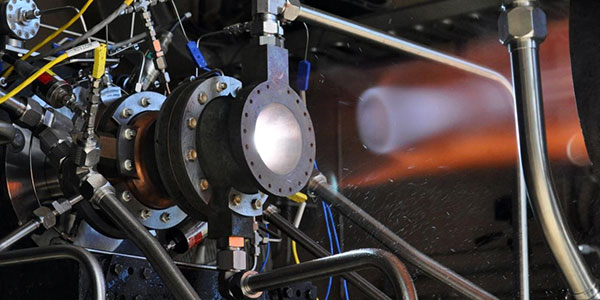
Additive manufacturing and design tools that support AM are not just about making neat things, or more aesthetically pleasing components or designs. The true value of design tools and manufacturing technology can lead to improved quality of life today and in the future. Image courtesy of Ansys.
Latest News
April 18, 2023
As 3D printing and additive manufacturing (AM) technologies and methods mature, designs that involve these technologies for product fabrication also take shape. Engineers are putting on a new hat: one that can afford more trials and errors than the 3D printing process allows.
Materials and forms are becoming increasingly complex and call on design engineers to pull out all the tools and methods in their toolboxes to design products that incorporate the advantages of this new category of fabrication technology.
Design Advancement
“Design and manufacturing are progressing together,” says Chris Robinson, senior product manager with Ansys. He notes how there have been design tools available for decades that allowed efficient designs that could not be produced via traditional manufacturing methods. Specifically, he mentions topology optimization and organic designs.
“Those design methodologies saw limited application until additive manufacturing advanced far enough that some of the designs created through such methods could actually be produced,” Robinson says.
Along with AM’s advancement, the design rules focused on AM were more well-established and the tools that help to create optimized designs have now advanced to beyond what they were 20 years ago. Further, many options for creating designs are tailored specifically for AM production.
“In addition to just having software that can come up with a design, it is critical to have software that can effectively validate the design before it goes into use or even into production,” Robinson says.

As AM and design tools have improved, so have the use case and manufacturing process validation tools. As these tools have advanced, it has opened the path for even greater application of AM-oriented design tools, because optimized designs can now be generated, validated and manufactured.
A Fabrication Resource
AM applications have evolved from prototyping to a true resource for larger scale production.
“In the early years of additive, the rapid prototyping space was the area we saw fastest adoption and significant, measurable value from the technology,” says Trent Still, senior technical marketing manager, Autodesk. “Those who need to experiment, prototype or iterate quickly were in heaven. Additive’s iterative approach enabled companies to ideate at a pace that was in many respects groundbreaking, which in turn helped them get to market faster.”
He points out that as we’ve progressed with integration of additive technology alongside advanced materials research, we’ve seen it expand into adjacent spaces like metal additive and polymer additive. “In fact, we’ve recently seen an amazing additive manufacturing example from GE; a component previously comprised of over 150 parts (and requiring complex assembly) was pared down to a single, additively manufactured part, ready to use,” says Still.
Ashley Eckhoff is a project manager for Siemens Digital Industries Software’s AM program in St. Louis, MO. He notes that AM has emerged as a production tool over the past 10 years. Companies quickly realized that to extract any potential from AM, they needed to design parts specifically for AM.
“As the AM industry has evolved, so has the way parts are designed for AM,” Eckhoff says. “In the first years, companies were looking for specific features like validation tools that could help them understand if a particular design was printable. Since then, the emphasis has moved toward optimization of designs for AM using tools like topology optimization and generative engineering. Now what we’re seeing is the desire to have those AM-specific tools evolve into a more automated design workflow where the design of optimized AM parts is streamlined to be as efficient as possible.”
Eckhoff says that design tools for AM design tend to fall into several major categories: Geometry manipulation, simulation and optimization.
Geometry tools are the traditional CAD tools that are the basis for modern product design. Simulation can be used to gauge product performance, but also serve as a foundation for optimization tools. Optimization tools take designer input and combine it with computing to optimize design geometry for a specific parameter (such as weight reduction or performance).
“It is the combination of these tools that is allowing the most forward-thinking companies to utilize additive manufacturing as a means to push their business into the future,” Eckhoff says.
Kristian Ejlebjærg Jensen is a technical product manager with COMSOL. He feels 3D printing has popularized generative engineering design methods based on topology optimization.
“The designs produced by topology optimization are often too complex for traditional manufacturing, leaving additive manufacturing as the only option,” Jensen says. “On the other hand, it is difficult to use the extreme design freedom that comes with additive manufacturing without employing automated design tools—there are thus significant synergies between the communities for additive manufacturing and topology optimization, and this is likely to continue.
“It is also possible to use topology optimization tools to generate designs that can be produced without using additive manufacturing,” he adds.

Jensen notes that in COMSOL Multiphysics, for example, topology optimization can be combined with milling constraints. This enables designers to create parts that can be manufactured with a more traditional approach.
Solving Supply Chain Woes
As design capabilities have increased, 3D printing and additive manufacturing are potentially a boon for supply chain woes that are troubling many businesses in North America and beyond that are struggling to outsource necessary products to fill orders. Now, 3D printing offers a viable solution.
“As materials for additive manufacturing improve and extended planet-spanning supply chains become risky, companies are turning to additive manufacturing for an alternative to conventional manufacturing,” says Chris Wentworth, additive manufacturing instructor for the American Society of Mechanical Engineers (ASME) and senior application engineer at Stratasys.
“Some bonuses include tooling elimination, design optimization, design agility and the ability to adjust rapidly to market demand. No longer is a manufacturer tied to a long supply chain with expensive tooling. They can make smaller lots with a lot less waste,” he says.
Wentworth notes that there are limitations: If you need a million plastic parts in less than a few months, you might have no choice but to tool up an injection mold. By contrast, he says that if you only need a few thousand, you could just print them in a powder-based nylon [Selective Absorption Fusion] or liquid photopolymer process like digital light process.
“Metal additive can yield much better material utilizations and a huge cost savings if you have the right application,” Wentworth adds.
A Bright Future Ahead?
The future looks promising for 3D printing and AM. But when great innovations advance, there’s no telling what twists and turns they’ll take as they enter full adoption. But for now, 3D printing is fast, relatively easy to use, and is on the verge of being able to fabricate on a larger scale.
“With this increased use of additive manufacturing in the practice of creating and building new product concepts and bringing them to life, it will be easier than ever to carry over production of these parts into the full-scale production,” says Tripp Burd, director of new platforms for Markforged. “Some of the past barriers against using AM in prototypes have been the inherent differences from most traditional manufacturing and the typical design constraints that each carry.”

“As mechanical engineering students who were taught the benefits of AM in universities start entering the workforce, I’m expecting them to have a significant impact on how additive is utilized in the industry over the next coming years,” says Robin Brockötter, 3D printing supply chain manager at Hubs. “On our end, we’re still experiencing strong growth in the [Multi Jet Fusion (MJF)] market especially as new materials and post-processing methods are being released on the HP systems.”
Of late, the artificial intelligence (AI) space has seen major advances, and it appears the pace of progress is accelerating, according to Brockötter.
“I believe it won’t be long until we can simply describe an object and there will be an AI tool to design everything for us. It is hard to predict the impact of such a tool on technological advancements, but I’m excited to see what the future holds,” he adds.
More American Society of Mechanical Engineers Coverage
More Ansys Coverage
More Autodesk Coverage
More COMSOL Coverage
Subscribe to our FREE magazine, FREE email newsletters or both!
Latest News
About the Author
Jim Romeo is a freelance writer based in Chesapeake, VA. Send e-mail about this article to [email protected].
Follow DE






